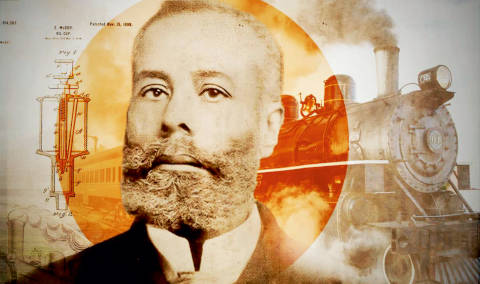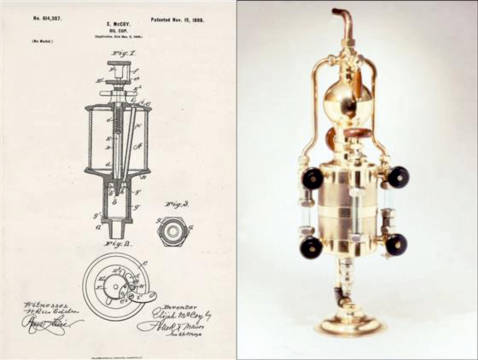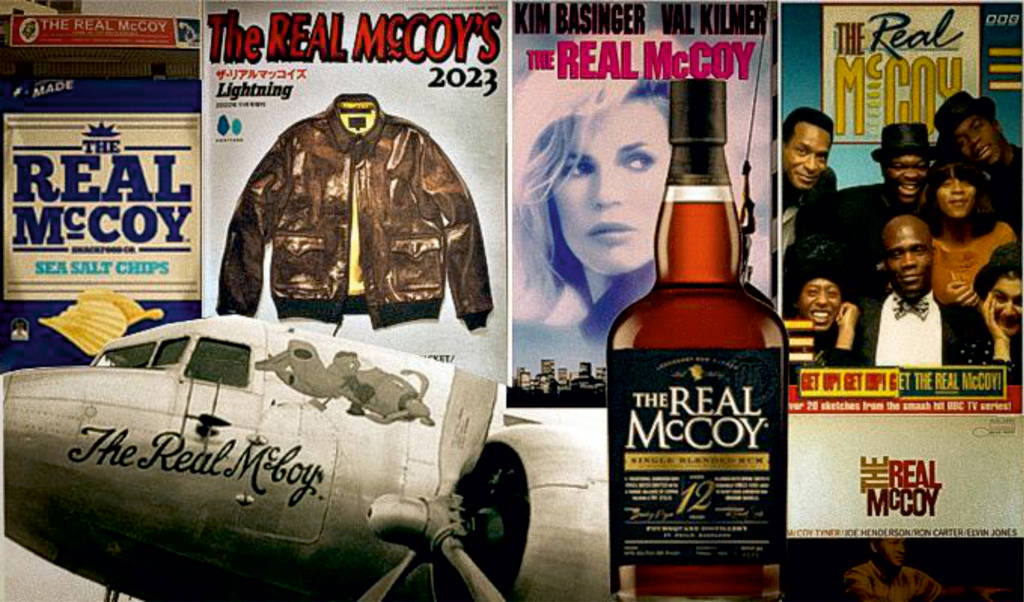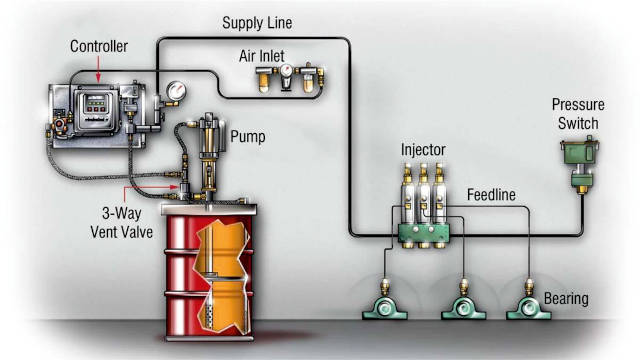Elijah McCoy: A Founding Father to Machinery Lubrication, and the Real McCoy
 Machinery lubrication has been an essential aspect of industrial production over the course of each of the four industrial revolutions. For nearly all industries, lubricants such as oils and greases help reduce friction and wear on mechanical parts, which, in turn, increases the efficiency and lifespan of the machinery. One of the most important contributions to the field of machinery lubrication was made by Elijah McCoy, an inventor who developed the first automatic lubricator for steam engines.
Machinery lubrication has been an essential aspect of industrial production over the course of each of the four industrial revolutions. For nearly all industries, lubricants such as oils and greases help reduce friction and wear on mechanical parts, which, in turn, increases the efficiency and lifespan of the machinery. One of the most important contributions to the field of machinery lubrication was made by Elijah McCoy, an inventor who developed the first automatic lubricator for steam engines.
McCoy was born in the mid-19th century to African American parents who, through the assistance of the Underground Railroad, had fled from Kentucky to Ontario, Canada, to escape slavery. As a young boy, McCoy was enamored and inspired by the sophistication of contemporary mechanical designs. At the age of 15, he was sent to Scotland, where he studied to become a mechanical engineer at the University of Edinburgh.
 Upon completing his education, McCoy returned to his family, who, by this time, had relocated to Michigan. Due to institutionalized racism, he struggled to find a mechanical engineering job worthy of his education and abilities. Instead, he took on jobs in the rail industry, like shoveling coal in the boiler rooms and oiling train wheel bearings and other moving parts. This latter task significantly extended transport delivery times.
Upon completing his education, McCoy returned to his family, who, by this time, had relocated to Michigan. Due to institutionalized racism, he struggled to find a mechanical engineering job worthy of his education and abilities. Instead, he took on jobs in the rail industry, like shoveling coal in the boiler rooms and oiling train wheel bearings and other moving parts. This latter task significantly extended transport delivery times.
During the first industrial revolution (before McCoy's invention), lubrication was done manually — a time-consuming and often unreliable process: Engineers would have to stop the machinery to lubricate the moving parts, which reduced productivity and increased the risk of equipment failure. This is where McCoy saw room for improvement; he believed that there had to be a better way to lubricate machinery, and he set out to find a solution.
In 1872, McCoy patented his invention, an automatic lubricator for steam engines, which was referred to as the lubricating cup, the oil-drip cup or simply “the lubricator.” The device used a small reservoir and a wick to deliver a steady flow of oil to the moving parts of the engine. The wick was designed to release the oil at a controlled rate, ensuring that the parts were always lubricated without the need for manual intervention.
 McCoy's lubricator was an instant success and was quickly adopted by major industries such as railroads, mining and steel production, where it became standard equipment on steam engines and other machinery during the second industrial revolution — a time when mass production, production efficiencies and other technological advancements were taking off. The success of McCoy’s design prompted imitation, but of the many people who attempted to replicate his design, none were successful. The prevalence of low-quality imitation automatic lubricators led buyers to demand McCoy’s original design, thus the expression "the real McCoy" — a common saying that means a genuine or real thing.
McCoy's lubricator was an instant success and was quickly adopted by major industries such as railroads, mining and steel production, where it became standard equipment on steam engines and other machinery during the second industrial revolution — a time when mass production, production efficiencies and other technological advancements were taking off. The success of McCoy’s design prompted imitation, but of the many people who attempted to replicate his design, none were successful. The prevalence of low-quality imitation automatic lubricators led buyers to demand McCoy’s original design, thus the expression "the real McCoy" — a common saying that means a genuine or real thing.
In addition to the lubricator, McCoy also patented other inventions, such as a folding ironing table, a lawn sprinkler and a self-regulating engine governor. He was granted a total of 57 patents during his lifetime, making him one of the most prolific inventors of his time.
From the Real McCoy to Real Automation
Today, more than 150 years after the invention of McCoy’s lubricator, machinery across the world and in all industrial plants still benefits from automatic lubrication. Nevertheless, manual lubrication practices are common, and machines are at constant risk due to the mismanagement of these manual activities.

Those who have been trained in manual lubrication best practices, such as using a grease gun to properly relubricate grease-lubricated bearings, know it is critical to not over-grease or under-grease bearings. Incorrect relubrication practices can lead to overheating, premature lubricant degradation, loss of wear protection, energy losses and, ultimately, premature machine failure. Cost considerations and the need for in-person inspections mean many tasks are still better off being performed manually, but as technology advances, we’re forced to continually reevaluate this tactic and consider more automatic approaches.
Like McCoy’s lubricator invention, more advanced automatic lubrication technologies have been developed and used for mechanical machines. These systems, which increase productivity and reduce the risk of equipment failure, have several benefits over manual lubrication, such as:
- Centralized lubrication systems — Uses a single pump and distribution lines to lubricate multiple points on a machine.
- Progressive lubrication systems — Uses a series of metering valves to dispense lubricant to specific points on a machine.
- Single-line lubrication systems — Uses a single pump and distribution line to lubricate multiple points on a machine.
- Dual-line lubrication systems — Uses two pumps and distribution lines to lubricate multiple points on a machine.
- Automatic greasers (also known as single-point lubricators) — Applies grease slowly over a period of months through various means of a pressurized reservoir, typically a mechanical pump on a plunger.
Image:Features of modern lubricator systems.
In many ways, McCoy was a visionary, far ahead of his time. Although his lubricator was introduced during the second industrial revolution, it wasn’t until the third industrial revolution (during the mid-20th century) that automation advanced to the next level. With the integration of computers, logic processors, electronic systems, communications networks and information technology, humans were further removed from manual intervention, and machine reliability was greatly improved.
As with other industrial practices over the last several decades, the technology behind automatic lubrication systems continued to improve. Once automatic lubrication systems became mainstream, they began seeing use in a wide range of industries like manufacturing, construction, mining, transportation and many more. There is hardly any industrial equipment today that isn’t a candidate for automatic lubrication — conveyors, pumps, compressors, gearboxes, bearings, etc. There are different types of automatic lubrication systems, like time-based systems, pressure-based systems and condition-based systems (the most advanced), and they use various technologies to control and automate the dispensing of lubricant.
From Real Automation to Condition-Based Lubrication and Industry 4.0
Condition-based lubrication is a type of automatic lubrication system that uses sensors to monitor the condition of machinery as a health check on the lubricant or the machine. Based on the condition, the lubricant can be applied as needed. Much like McCoy’s innovative motives with the lubricator, the approach of condition-based lubrication is based on the principle of "right lubricant, right place, right time" and aims to further minimize the risk of lubricant overuse and equipment failure.

Monitoring for conditions can be accomplished in many ways. Our own human senses can monitor machine conditions, and we still rely on those today. Beyond our senses, there are many other sensor technologies that can be deployed. Some are hard-mounted near moving machine components; others are part of a handheld instrument for route-based collection by a technician. These sensors monitor operating conditions such as vibration, ultrasound, temperature and more.
Oil analysis, although part of laboratory instrumentation, also uses sensors to analyze the sample of lubricant. The many instruments employed by the lab can monitor detailed attributes of the lubricant to alert us of failure modes of the machine, such as with wear debris monitoring (predictive maintenance). They can also detect something about the lubricant or in the lubricant that could lead to a machine failure, focusing on the root cause (proactive maintenance).
With condition-based lubrication systems, condition monitoring and lubrication systems can be amalgamated. These systems use the data from the sensors to determine the correct lubricant and lubrication schedule for the machinery. They can also generate alerts or alarms if a problem is detected, allowing maintenance personnel to take action before equipment failure occurs.
The most advanced condition-based lubrication systems are connected to a cloud-based central monitoring system, such as a Lubrication Management System (LMS). Analyzing machine condition data simultaneously across several machines in the plant allows for smart automation of follow-up activities. This is an essential part of establishing equipment reliability and is a core theme of the fourth industrial revolution (or Industry 4.0) that we live in today.
Conclusion
 Elijah McCoy's invention of the automatic lubricator was a significant breakthrough in the field of machinery lubrication. Not only that, his engineering contributions and legacy continue to be celebrated and remembered as he pioneered a new way of thinking about lubrication in the 19th century and beyond. It all started when he saw a need to create efficiencies in the railway industry that was held back by the manual approaches to lubricating numerous lubrication points.
Elijah McCoy's invention of the automatic lubricator was a significant breakthrough in the field of machinery lubrication. Not only that, his engineering contributions and legacy continue to be celebrated and remembered as he pioneered a new way of thinking about lubrication in the 19th century and beyond. It all started when he saw a need to create efficiencies in the railway industry that was held back by the manual approaches to lubricating numerous lubrication points.
Today, there are thousands of lubrication points across a typical industrial plant. Automation within lubrication activities is a must. Not only can this help reduce wasted maintenance activities, but when lubrication is done right, it can help to extend the lifespan of machinery and increase overall equipment reliability. It also helps to minimize the risk of lubricant overuse and environmental pollution by using the right amount of lubricant at the right time.
If you work in an industrial environment with lubrication activities, think to yourself: where does “the Real McCoy” exist today? In other words, what modern lubrication approaches still need to be implemented to create your reliable plant?
In honor of McCoy's legacy of practical and tireless innovation, the International Council for Machinery Lubrication (ICML) will soon add the Elijah McCoy Award for Lubrication Champions to its longstanding industry awards program. This latest offering will recognize individuals who improve machine reliability and maintenance quality through leadership, education, and individual contributions to the development, implementation, and management of best-in-class machinery lubrication programs. ICML will announce its criteria and start accepting nominations in mid-2023. www.lubecouncil.org
